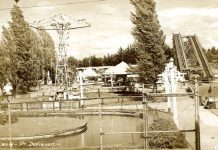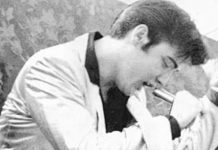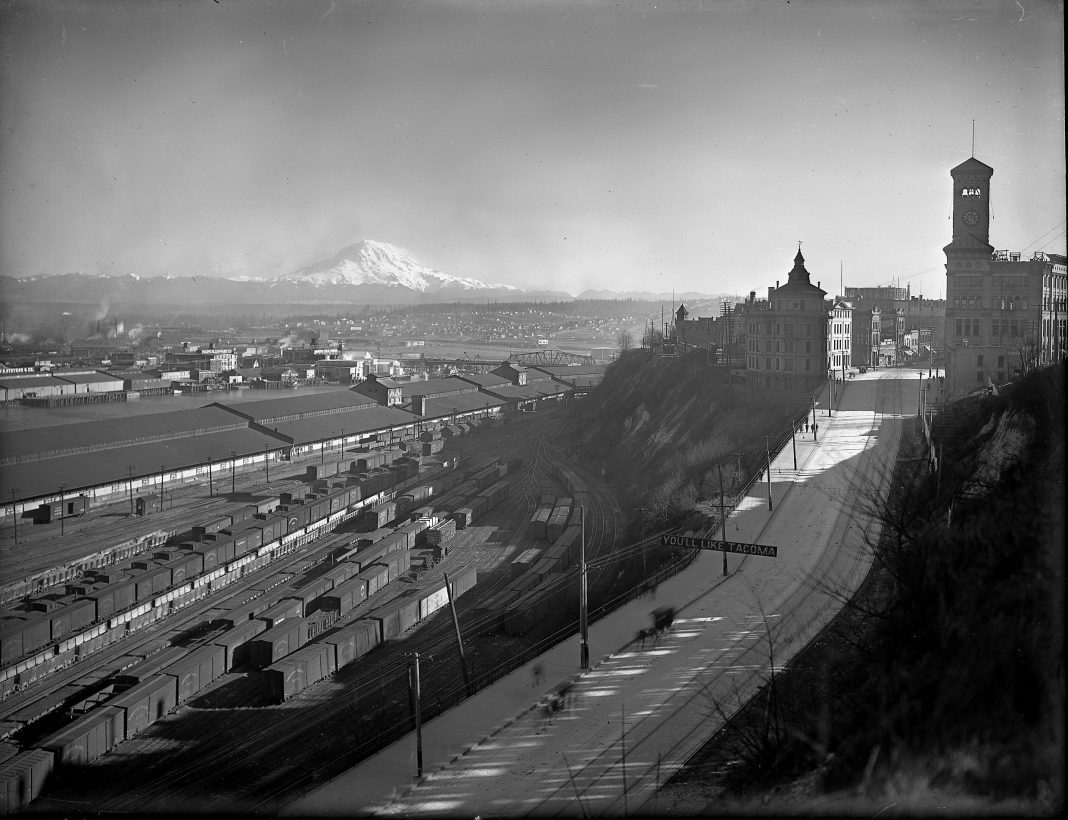One of the region’s oldest and most mysterious petroglyphs rests in Tacoma, but no one alive has ever seen it. And no one ever likely will.
Someone carved an image of a man on a massive bolder along the shoreline of what is now Commencement Bay some 12,000 years ago. That was about the time Puget Sound was forming, geologically speaking, since the waterway formed as the last Ice Age retreated north and melted away the thick sheets of ice and snow that covered the area about 15,000 years ago.
The rock, venerated by Native Americans, was believed to have been created by the mythical deity known as the Changer, who had turned a man into stone, much like how Mount Tahoma was formed long ago.
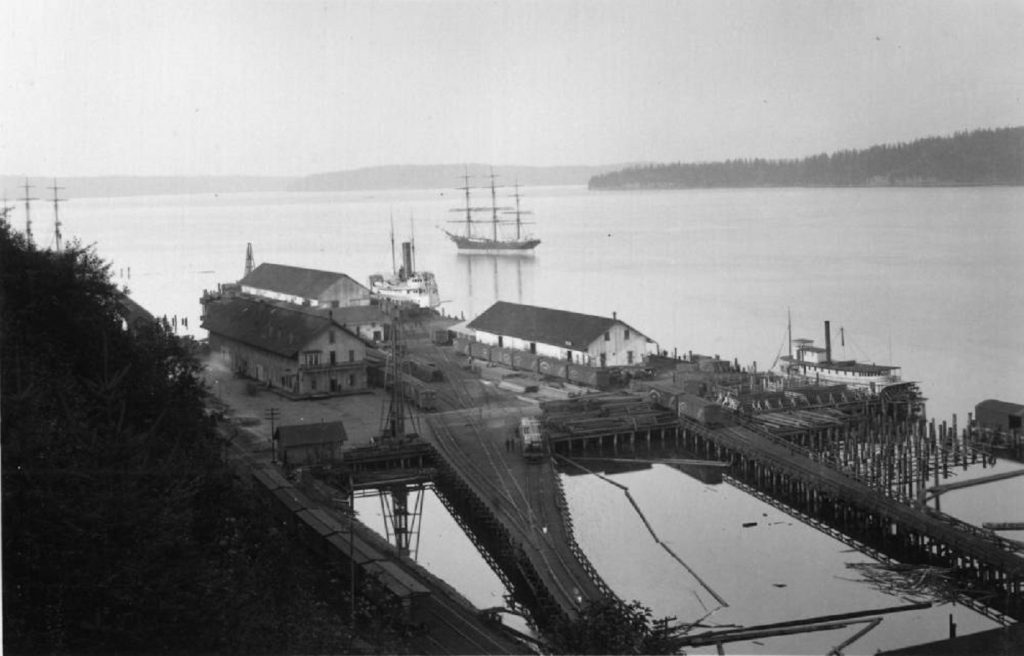
“This stone has been described as a hieroglyph, but Jerry Meeker, who saw it many times, says this is not the case. It is believed that in no instance did the Indians west of the Cascades attempt rock carving or rock painting,” Herbert Hunt wrote in his 1916 book, “TACOMA: Its History and Its Builders, A Half Century of Activity.” “Another interesting hieroglyph rock was found a number of years ago at Agate Point on the northeast corner of Bainbridge Island. It is three or four feet across, and Indians are much afraid of it. Dr Charles Buchanan of the Tulalip Indian School, while traveling with Indians in that neighborhood, found that they would not approach this rock. … The spot where the Flyer Dock afterward was built, the Indians called Sog-go-ton, and the gulch occupied by the Stadium was Hod-hod-gus. Literally, this word means a great log with several separate fires burning beneath it, or in short, a camping place.”
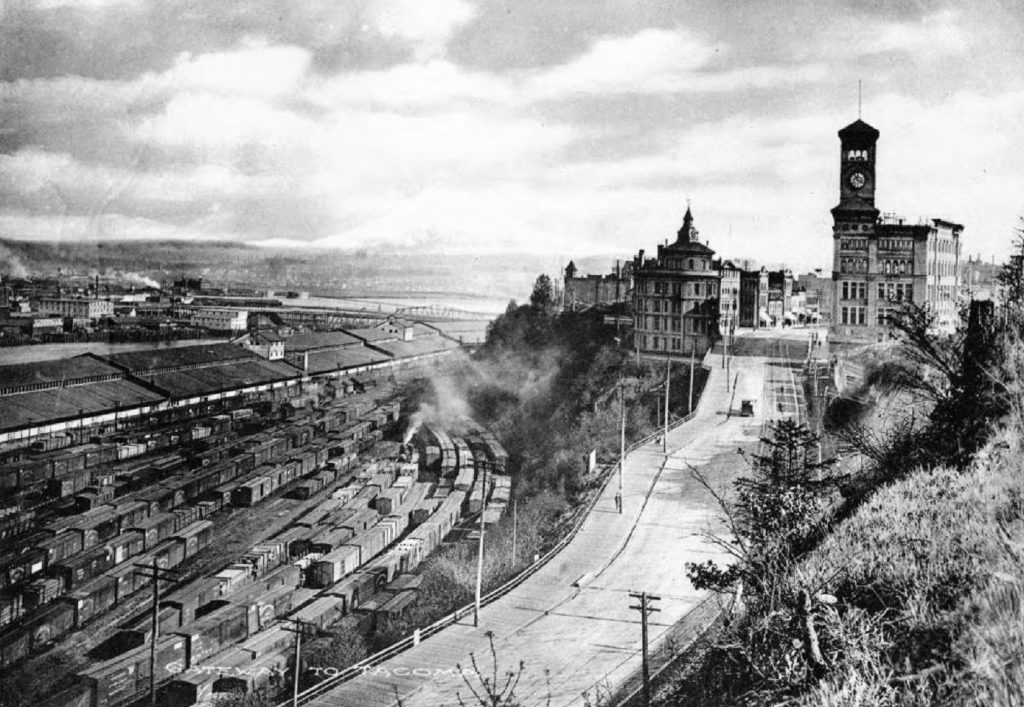
The stone along Commencement Bay was last seen in 1888. That’s when Northern Pacific Railroad started construction on a rail yard along the waterway and used high-pressure water hoses to erode the nearby hillside to create fill dirt to anchor the tracks at the Half Moon Yard directly below what was NP’s headquarters. The rock remains in the area, buried under rocks and dirt of the active railroad tracks along Dock Street, which BNSF Railway owns.
While the recovery of the petroglyph would provide a direct link to the people who lived here thousands of years ago, the likelihood of efforts to find and present it is unlikely.
“We sort of know where it is,” local historian Michael Sullivan said. “We don’t know exactly where it is, but we have a pretty good idea.”
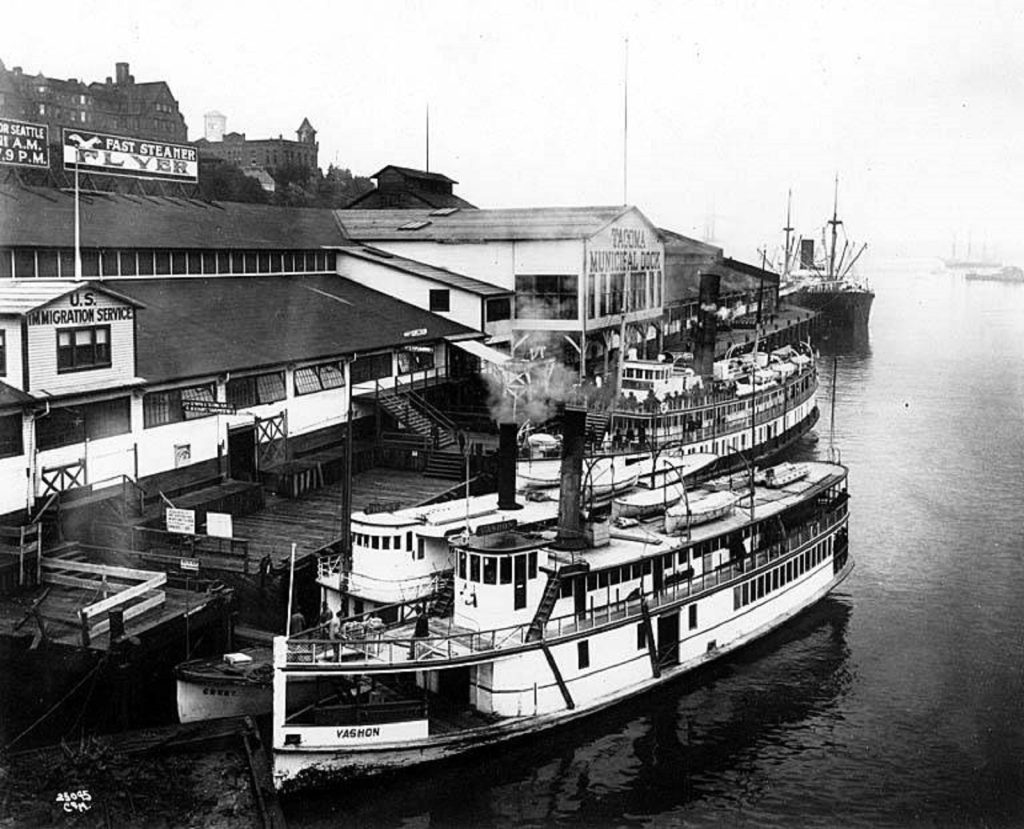
A few passes of ground-penetrating radar in and around the Half Moon Yard, he added, would likely pinpoint the petroglyph fairly quickly. That’s the easy part, however. The hard part would be digging it up since the industrial site is an active rail yard and a critical link for national rail traffic.
“The biggest issue would be that,” Sullivan said.
No one has that kind of drive or money for what could be an expensive archeological expedition, particularly since the Puyallup Tribe has a general policy of leaving artifacts where they are. That makes sense to Sullivan since the petroglyph is currently protected from the weather, vandalism, and the passage of time where it is now.
“In a sense, it is in a frozen state,” he said.
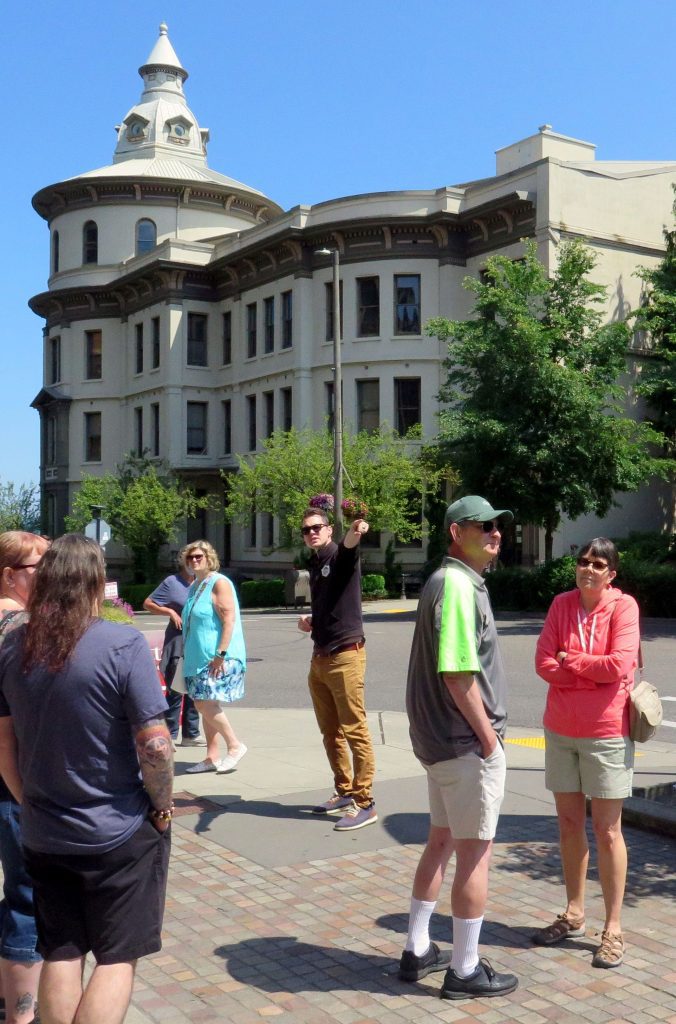
The area will likely need changes or upgrades eventually, so maybe the petroglyph might reappear then. In the meantime, people can see other petroglyphs around the region, with the closest known one of note being on the Key Peninsula, and study them from the comfort of their own homes by reading all about them courtesy of researchers, graduate students, professors, and government agencies through the ages.
























